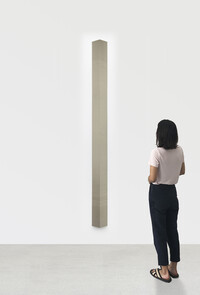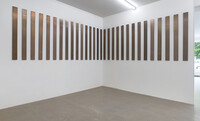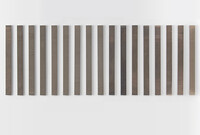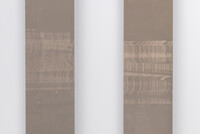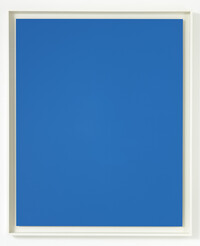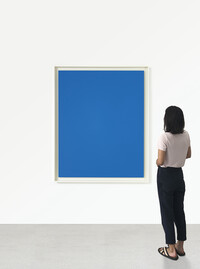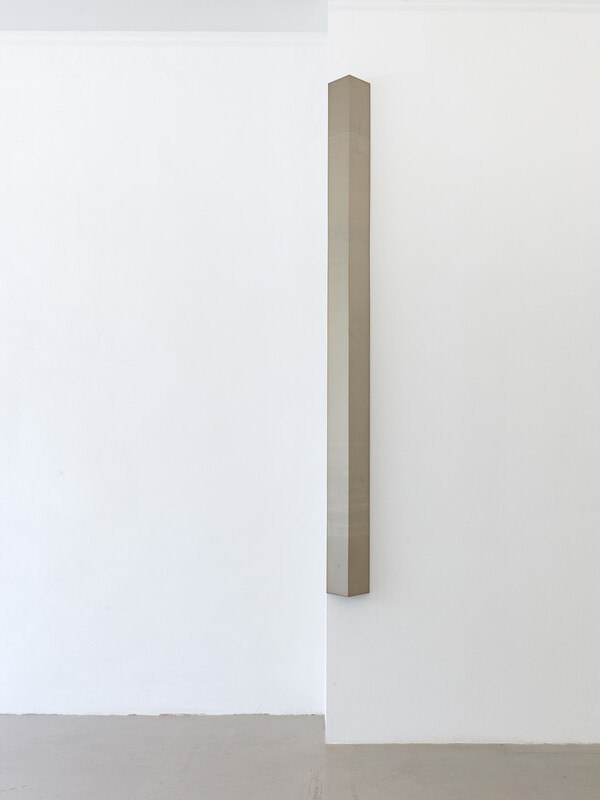If the work is always changing, our understanding of the work is always changing as well.
Liz Deschenes
Described as the "silent giant of post-concept photography" in the New York Times in 2014, Liz Deschenes liberates her photographic-sculptural works from any representational task historically assigned to photography. Her minimalist works focus on the conditions of perception and the technical coordinates of "image making": material, place, time, and architecture. The "how we see our reality" thus is always intertwined with a political component in Liz Deschenes' work. According to Eva Respini, “At the core, Deschenes’ work embodies resistance: the resistance to one definition of photography, the resistance to time, and the resistance to representation, a deeply personal and political act. The resistance to representation in many forms also includes the representation of identity, gender, and the body. The closer we look, the more the work reveals its numerous layers. Depending on the day, the weather, the architecture, and if somebody else is in the gallery with a viewer, each encounter with Deschenes’ work is a profoundly unique experience that speaks to our fundamental desire for art to transform us.“
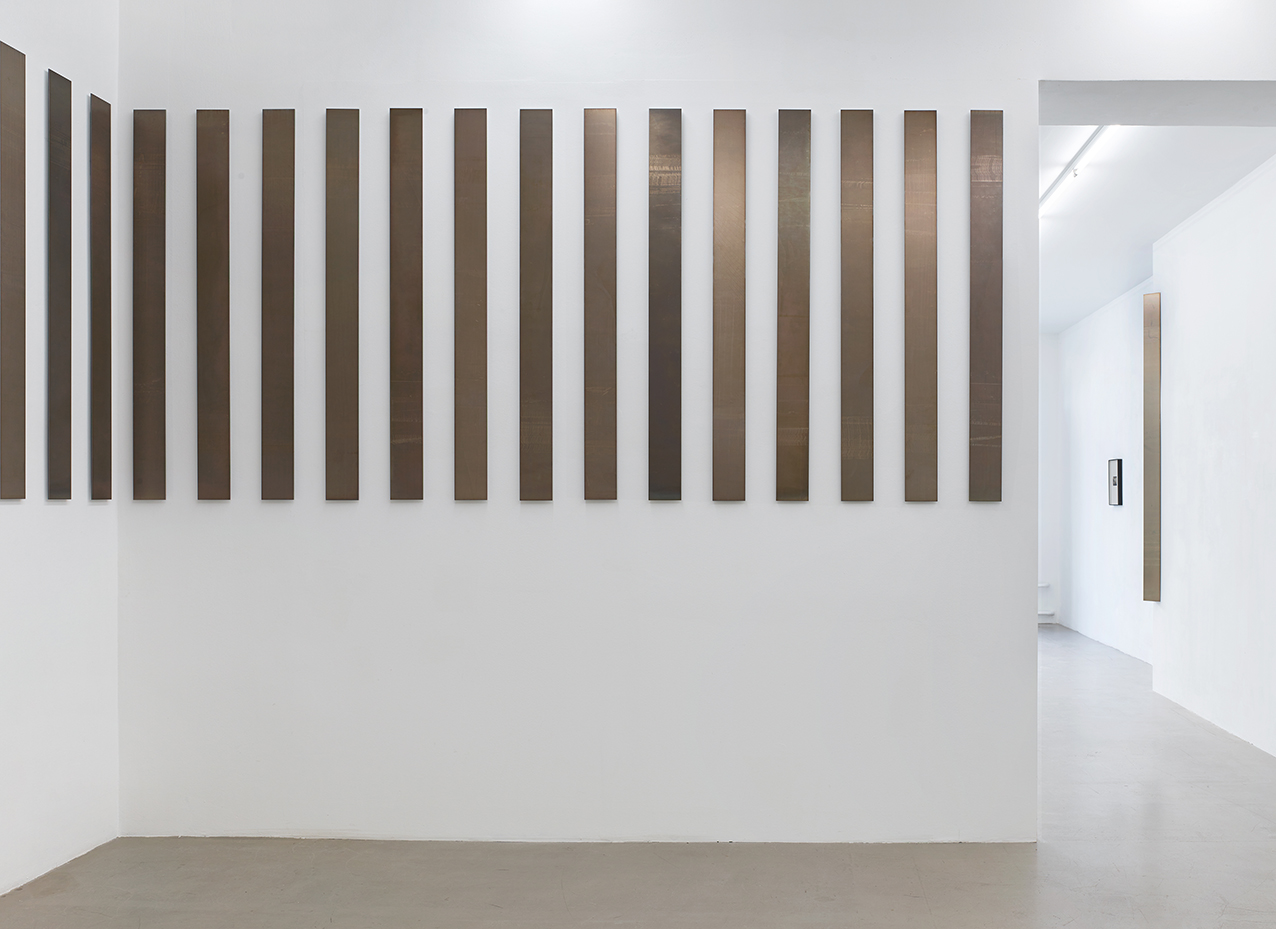
The title of Liz Deschenes‘ 30-part work „FPS (45)“ refers to the film term „frames per second“ and is directly related to the artist‘s interest in the experiments of the scientist and chronophotographer Étienne-Jules Marey (1830-1904), who developed a method of capturing sequences of movement on a single elongated photographic print by rattling a photosen- sitive film through the lens at 60 frames per second. Deschenes‘ sequentially installed photograms „FPS (45)“ translates the capture of space and time into an „embodied form“ of time in the midst of real architecture.
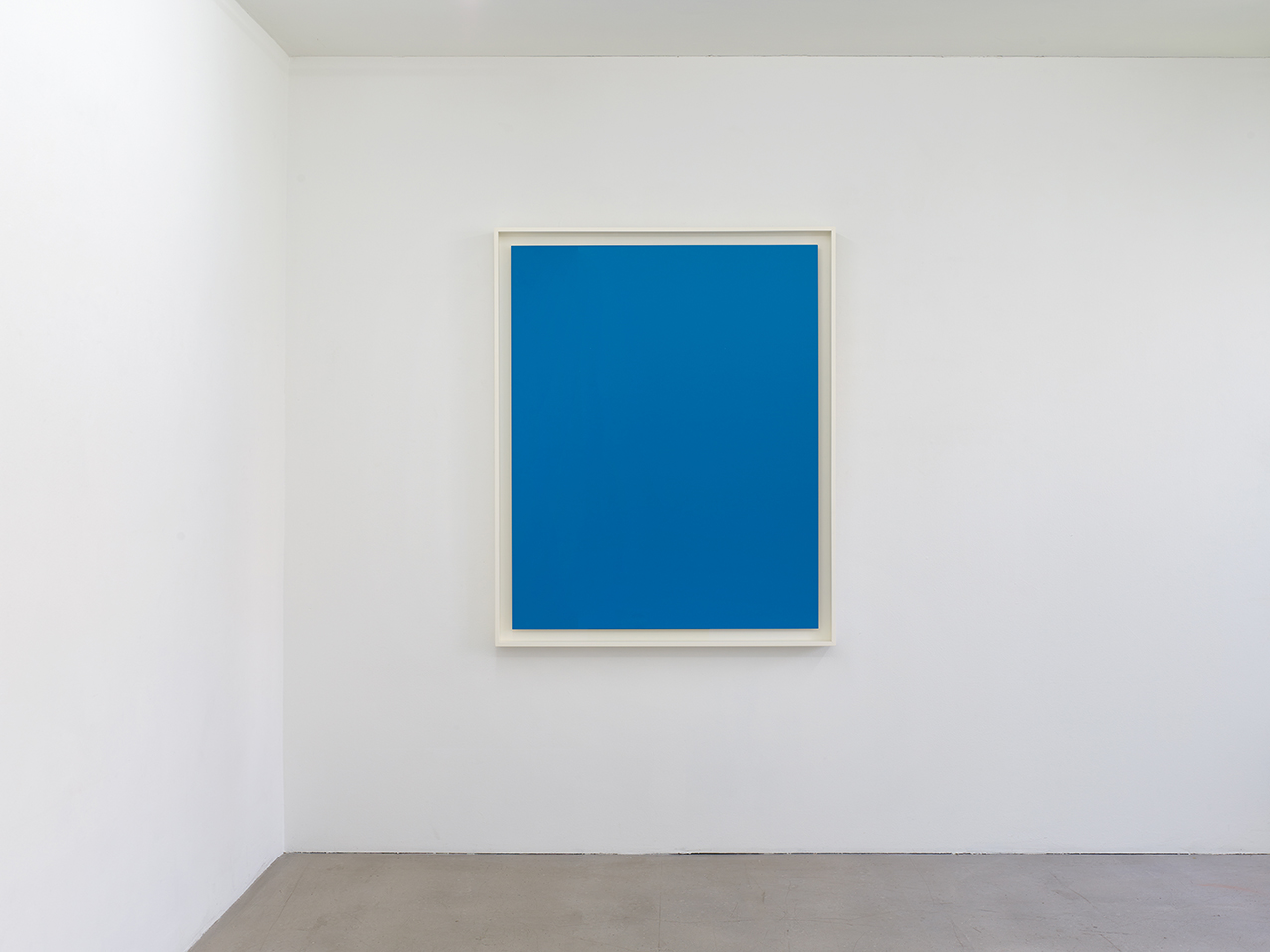
Liz Deschenes‘ Blue Wool series employs digital pigment printing to produce blue toned monochromes and explore the formal qualities of colour. Liz’ chosen colours are derived from printing industry’s Blue Wool Scale, a professional standard used to gauge the lightfastness of pigments. Works from this series were exhibited in Liz’ survey exhibition at the ICA Boston.
Liz Deschenes
Stereograph #35, 2019
Silver toned photogram mounted on Dibond
213,4 × 17,8 × 12,4 cm
The 2-part work „Stereograph 36“ is part of the series, which she started on the occasion of her solo exhibition at the Vienna Secession in 2012. The title refers to the photographic technique of the same name. Stereography is used to create images that appear to be three-dimensional when viewed through a specific apparatus. To create such an image a motif is photographed from two slightly different angles, mimicking the individual perspective of each of the viewer‘s eyes. The spatial shift is an integral part of the technical construction of seeing and the term “camera“ derives from the Latin word for “room”. By “folding” the two parts of the work and thus creating a factual double image of the real architectural space, Liz Deschenes picks up on the idea that photography is tied to movement through space, transforming our perception.
It´s interesting to talk about time (…) Whether you are working with a camera, or photographic materials, whether you are working digitally, it’s the one common thread to the thing that we call photography.
Liz Deschenes (1966) lives and works in New York. Her works are part of museum collections such as Centre Pompidou, Museum of Modern Art New York, Walker Art Center, Minneapolis, The Art Institute of Chicago, Hirshhorn Museum and Sculpture Garden, Washington D.C, Whitney Museum of American Art, New York, Solomon R. Guggenheim Museum, New York, The Israel Museum, Jerusalem, Milwaukee Art Museum, Milwaukee, San Francisco Museum of Modern Art, San Francisco Aïshti Foundation, Beirut, Institute of Contemporary Art, Miami or Pinault Collection. Her work is currently featured in the exhibitions “Une seconde d'éternité”, Pinault Collection - Bourse de Commerce, Paris. Last year she participated in the exhibitions Shifting the Silence, San Francisco Museum of Modern Art; and in the Biennale de Genève: Sculpture Garden. In 2021, Liz Deschenes was featured in the exhibitions True Pictures? at the Sprengel Museum in Hannover, Off the Wall at the San Francisco Museum of Modern Art, and The Inconstant World at the Institute of Contemporary Art, Los Angeles. In 2020, her work was on display at Art Institute of Chicago in the exhibition Photography + Fine Art: Material Meanings - Selections from the Contance R. Caplan Collection. The artist was presented in a group exhibition at Punta Della Dogana / Pinault Collection, Venice (2019). Past solo exhibitions include the ICA, Boston (2016); Walker Art Center, Minneapolis (2014); MASSMoCA, North Adams (2015) and Secession, Vienna (2012-2013). Deschenes’ work was included in Collected by Thea Westreich Wagner and Ethan Wagner at the Whitney Museum, New York (2015) traveling to the Centre Pompidou, Paris (2016).


